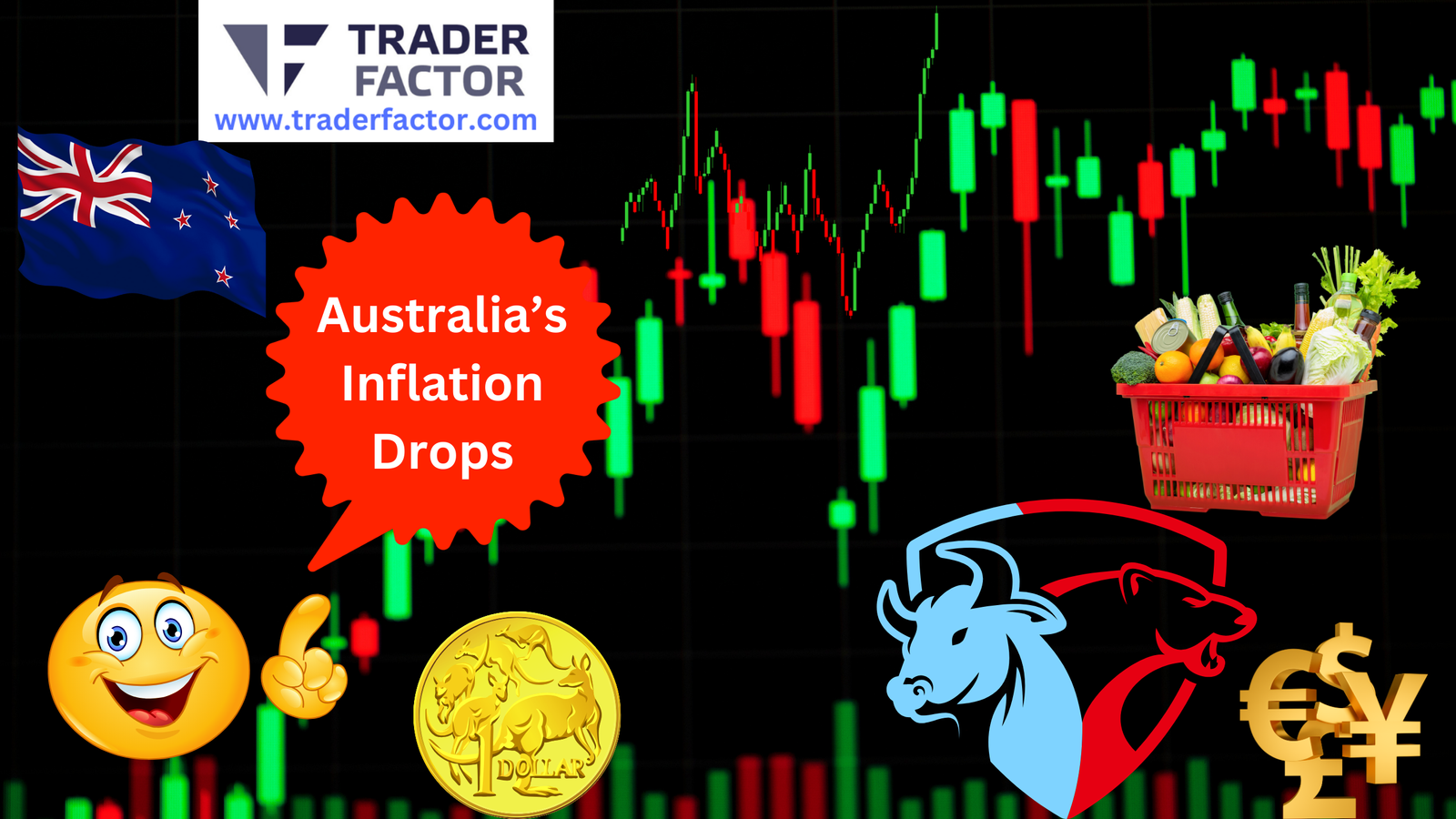Australia’s annual inflation rate has taken a significant dip, settling at 2.8% in the third quarter of the year. This is the lowest rate recorded in over three years, offering a glimpse of relief from the persistent price pressures that have gripped the economy. The decline represents a pivotal moment for both consumers and policymakers, as it signals a potential easing of the financial strain experienced by many Australians. Despite the positive headline figures, it’s crucial to note that underlying inflation remains slightly above the Reserve Bank of Australia’s (RBA) target range, indicating that the journey to economic stability is far from over.
The slowdown in inflation is a result of various factors that have collectively contributed to the easing of price pressures. The Australian Bureau of Statistics (ABS) reported a modest 0.2% increase in prices for the September quarter, a stark contrast to the 1% rise observed in the previous quarter. This deceleration highlights a significant shift in the economic landscape, offering a semblance of stability in an otherwise volatile post-pandemic recovery phase.
Key Factors Influencing Inflation
The decline in Australia’s inflation rate can be attributed to substantial reductions in fuel and electricity costs. These two components have historically been volatile, with prices subject to rapid fluctuations based on global market trends and domestic policy changes. In the recent quarter, government energy rebates have played a pivotal role in cushioning these costs, providing temporary relief to households and businesses alike. Without these rebates, electricity prices would have seen a 0.7% increase, underscoring the significant impact of governmental intervention in stabilizing energy costs.
The drop in fuel prices is closely linked to the easing of global oil prices, which have seen a downward trend due to various geopolitical and economic factors. This reduction has translated into decreased transportation costs, benefiting both consumers and industries that rely heavily on logistics and goods movement.
Goods vs. Services Inflation
The inflation dynamics in Australia present a mixed picture when dissecting goods versus services. Goods inflation has witnessed a decline, dropping from 3.2% to 1.4% annually. This is largely due to the reduced energy costs, which have had a cascading effect on the prices of manufactured goods and commodities. The decrease in goods inflation is a positive sign for the economy, as it suggests a potential stabilization of supply chain issues that have plagued global markets in recent years.
Conversely, services inflation has experienced a slight uptick, with the annual rate rising to 4.6%. This increase is predominantly driven by higher costs in sectors such as housing, insurance, and childcare. The tight rental market, characterized by low vacancy rates, has led to rising rents, further exacerbating the overall cost of living for Australians. Additionally, the cost of insurance and childcare services continues to rise, putting additional strain on household budgets.
Underlying Inflation and Monetary Policy
The trimmed mean, a key measure of underlying inflation that excludes volatile price swings, has decreased to 3.5% annually. This figure aligns with market expectations, yet it remains above the RBA’s target range of 2-3%. The central bank’s cautious approach suggests that while headline inflation may continue to decline, underlying inflation could persist at elevated levels, influenced by structural changes in the economy.
The RBA has forecasted that headline inflation will fall to 3% by the end of 2024. However, the bank remains vigilant regarding underlying inflation, which is anticipated to stay above its target band. This scenario poses a challenge for monetary policymakers, who must balance the need for economic growth with the imperative to maintain price stability.
Economic Implications and Market Reaction
The release of the Consumer Price Index (CPI) has had a notable impact on market sentiment, particularly regarding the prospects of an interest rate cut by the RBA. Following the latest inflation figures, the likelihood of an imminent rate cut has diminished, with market analysis indicating a reduced probability of such a move before the end of the year. The Australian Dollar has shown resilience against the US Dollar amid these developments, reflecting a cautious yet optimistic market outlook.
Investors and market participants are closely monitoring the RBA’s monetary policy stance, as well as broader economic indicators that could influence future interest rate decisions. The central bank’s commitment to addressing inflation while supporting economic recovery remains a focal point for both domestic and international stakeholders.
Broader Economic Context
In the global economic arena, Australia is not isolated from the broader trends and challenges that influence its domestic landscape. The Australian Dollar faces additional pressure from uncertainties surrounding China’s economic measures, which have implications for Australia’s trade and investment prospects. As one of Australia’s largest trading partners, China’s economic health plays a crucial role in shaping Australia’s economic trajectory.
Fluctuating commodity prices, particularly in the mining and agricultural sectors, also contribute to the complex economic environment. The recent uptick in copper prices, coupled with a slight decline in iron ore prices, reflects mixed market sentiments regarding China’s economic prospects and global demand trends.
Internationally, markets remain attentive to key economic data releases, such as the US GDP figures and global monetary policy shifts. These developments have the potential to influence investor sentiment and capital flows, impacting the Australian economy in various ways.
Looking Ahead: Future Scenarios and Challenges
As Australia navigates its economic recovery, several potential scenarios and challenges lie ahead. The trajectory of inflation, interest rates, and economic growth will be influenced by both domestic policies and external factors. Policymakers must remain agile, ready to adapt to changing circumstances and emerging risks.
The ongoing impacts of climate change, technological advancements, and geopolitical tensions are likely to shape the economic landscape in the coming years. Australia must continue to foster resilience and adaptability within its economy, ensuring that it can thrive amidst both opportunities and uncertainties.
Conclusion
While Australia’s inflation rate has seen a welcome decline, the broader economic context remains complex and dynamic. The future will require careful navigation, strategic planning, and a commitment to sustainable growth that benefits all Australians.
Disclaimer:
All information has been prepared by TraderFactor or partners. The information does not contain a record of TraderFactor or partner’s prices or an offer of or solicitation for a transaction in any financial instrument. No representation or warranty is given as to the accuracy or completeness of this information. Any material provided does not have regard to the specific investment objective and financial situation of any person who may read it. Past performance is not a reliable indicator of future performance.

















